This is the fifth post in a series about the Leica Q2 Monochrom. You can see all the other posts in the series by looking in the Category List drop-down menu on the right side of the page.
You can learn a lot about a camera with the lenscap on. I made a series of images of the back of a Thumbs-Up Q2 lenscap, under the following conditions:
- ISOs 100 through 100000, in 1-stop steps
- 1/800 second shutter speed
- f/16
- Automatic shutter
- Lens focused on infinity
- 24 degrees C ambient
- DNG recording
I looked at the raw histograms with RawDigger.
The Q2 uses a 14-bit analog to digital converter (ADC). The black point is about 512. The histogram is misshaped. There are two unpopulated buckets right in the middle of what should be a Gaussian distribution. The distribution observed here is asymmetrical. This kind of behavior could cause the “green shadows problem” observed with the Leica M240 if the camera were a normal Bayer-CFA one, but I think the only effect here will be to raise the black point a bit and reduce noise at low ISOs, sacrificing a bit of shadow detail.
At ISO 200, the distribution is more symmetrical, and there’s more noise. The dropouts are still there.
The noise is worse at ISO 400, as you’d expect.
I changed the horizontal scale for this and the next few shots. This is a credible histogram, except for the dropouts.
This follows the pattern that we’re seeing in this series.
So does this, but the histogram is starting to get ragged.
I’ve changed the scale again. There is some combing visible. Possibly there’s some noise reduction processing taking place.
Now there a lot of combing in the vicinity of the black point. I don’t like to see that.
Again, a change of scale. Now, in addition to the combing near the black point, there is a cutoff at high counts. I’m surprised to see that. Could it be an issue with RawDigger?
Pretty gnarly.
Ugh.
I think I’ll look at the frequency domain to try and see what kind of processing Leica is doing at high ISO settings.
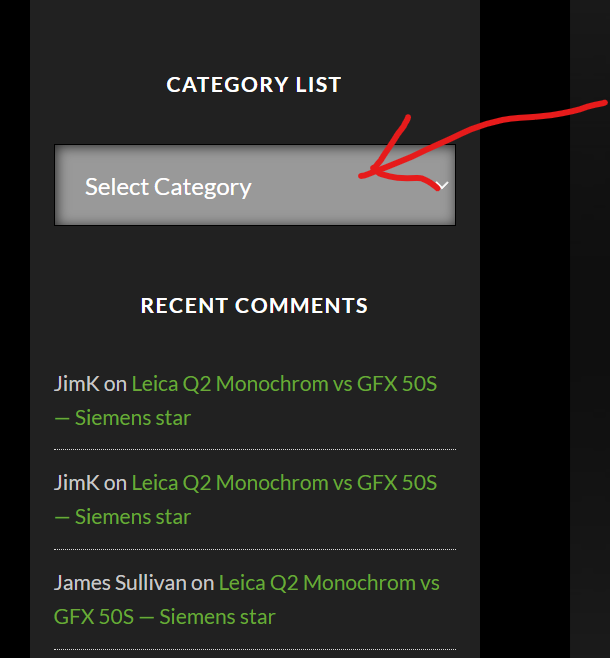
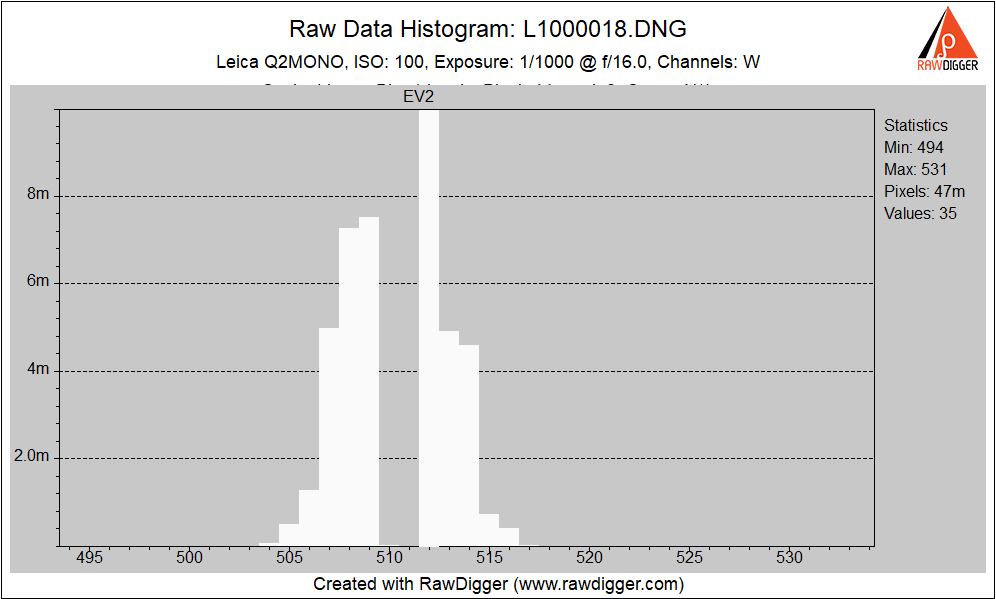
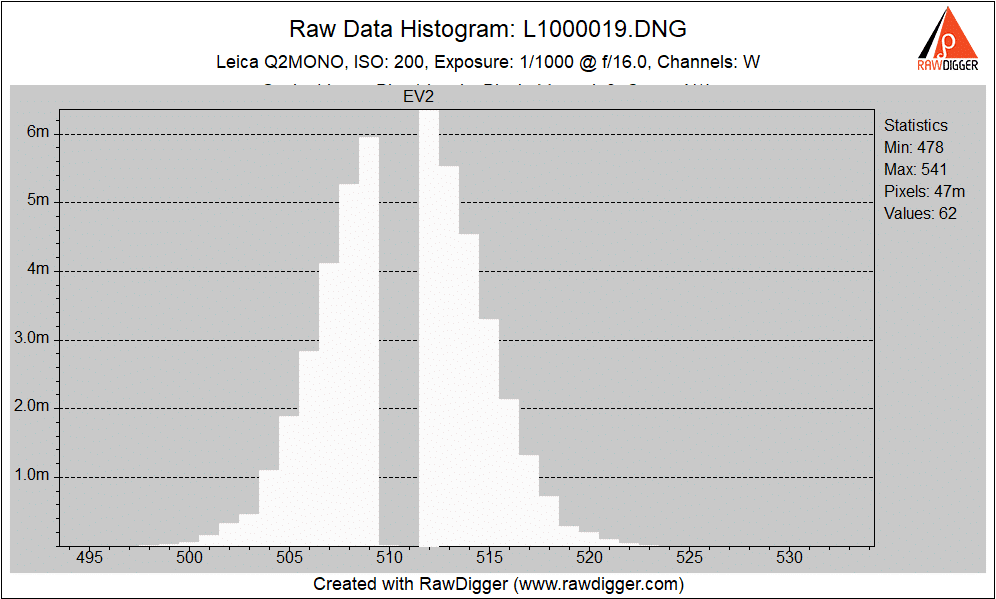
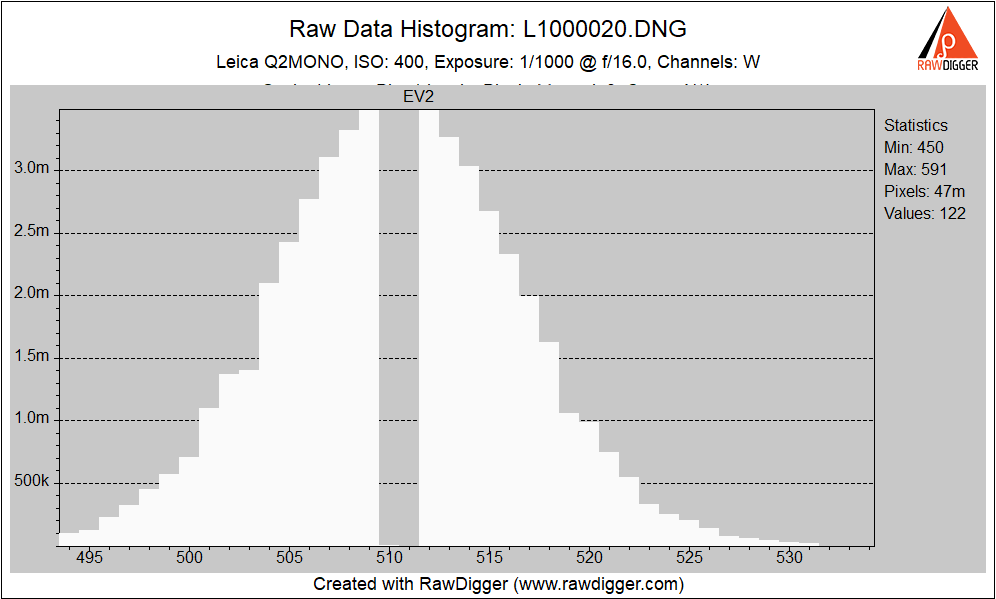
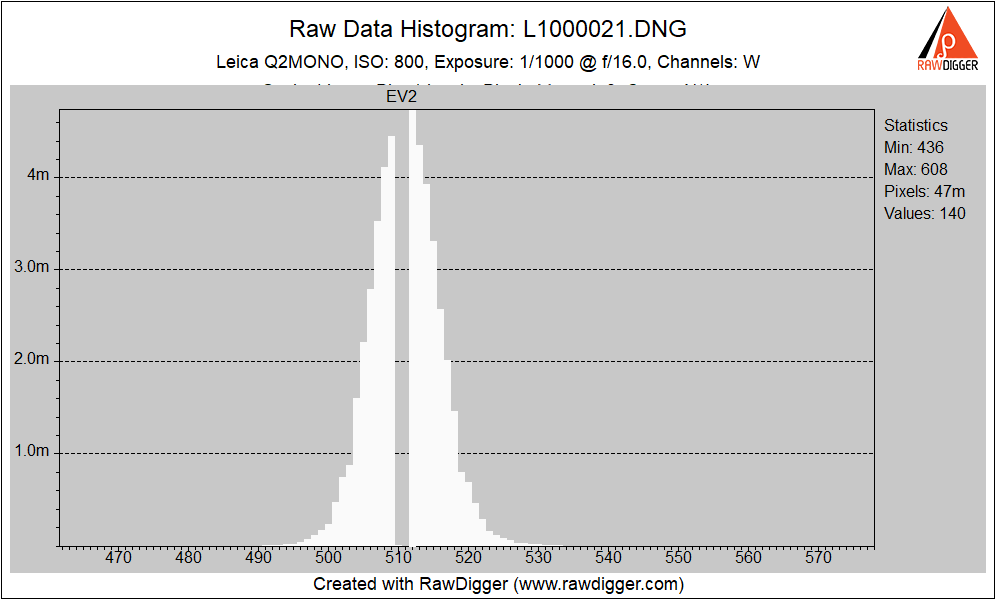
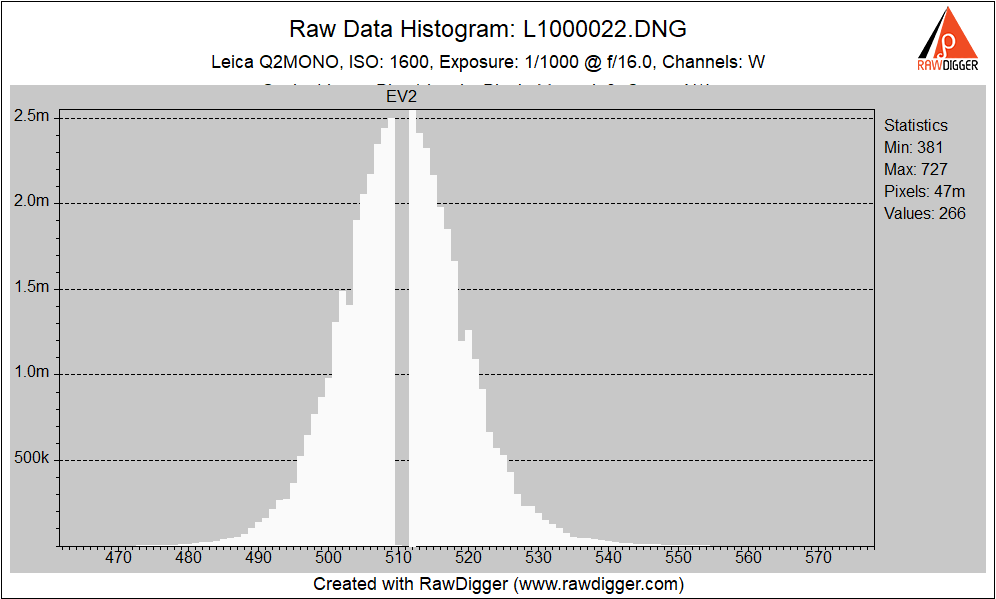
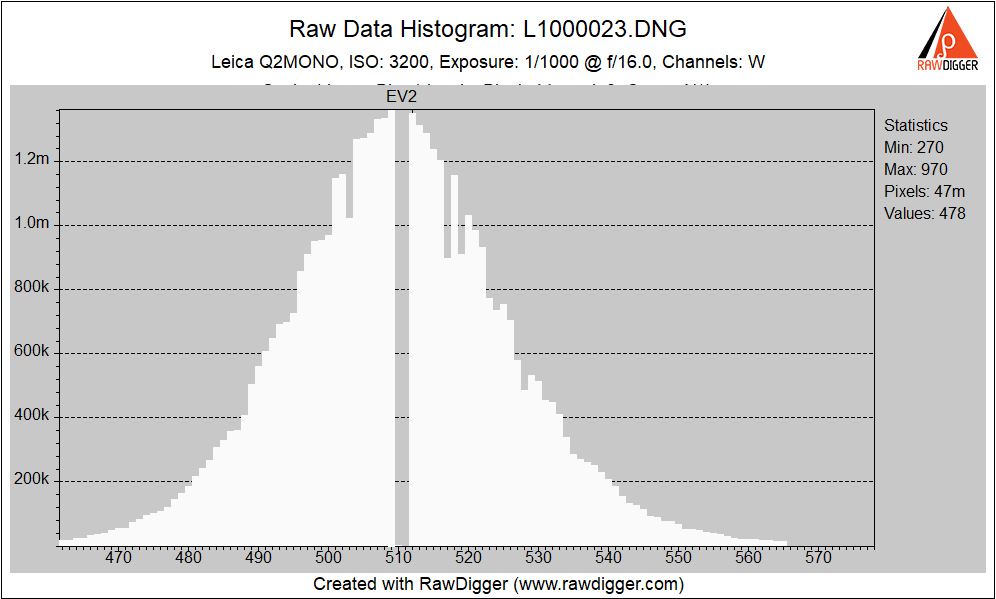
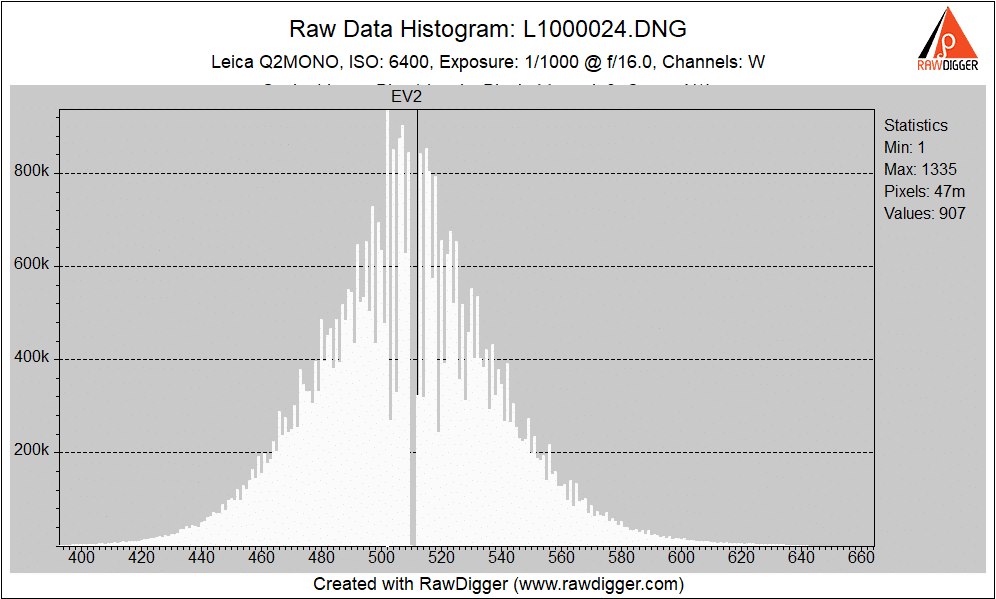
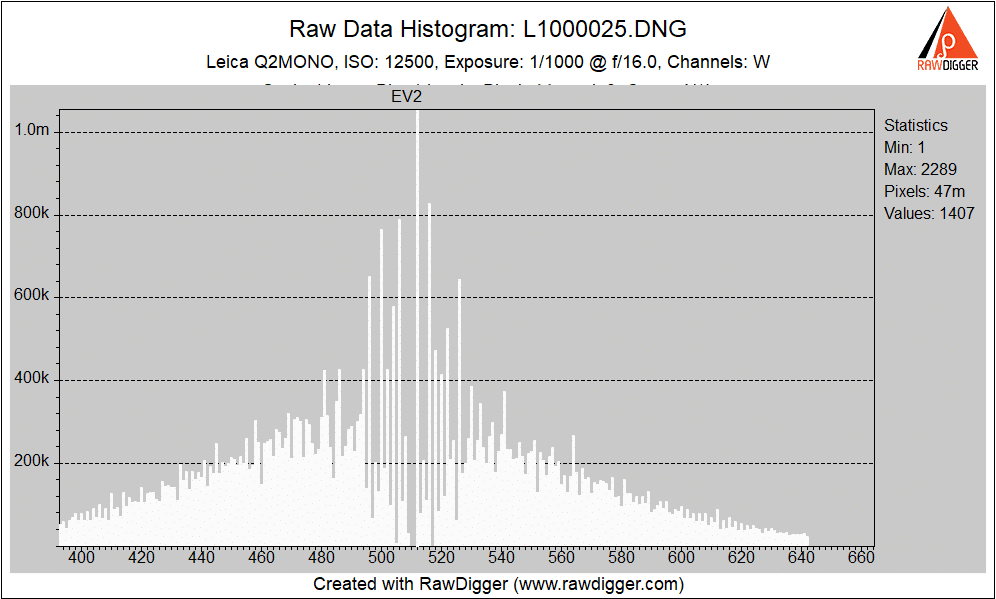
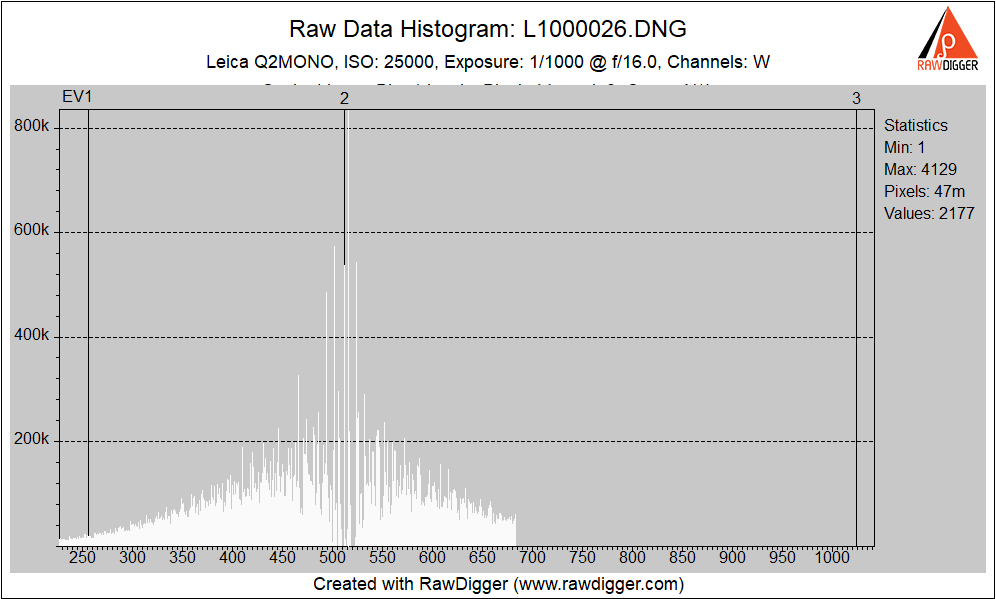
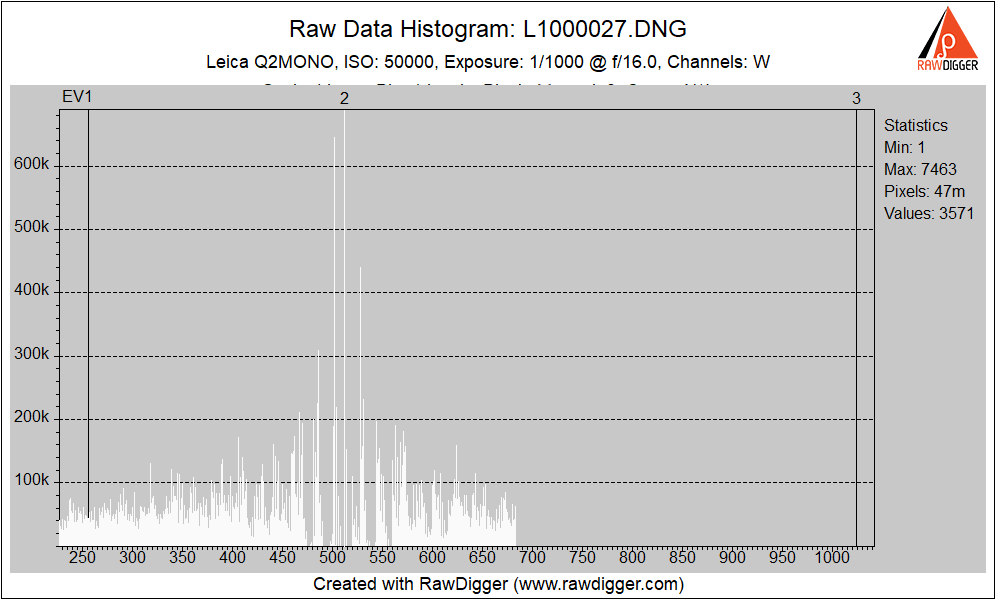
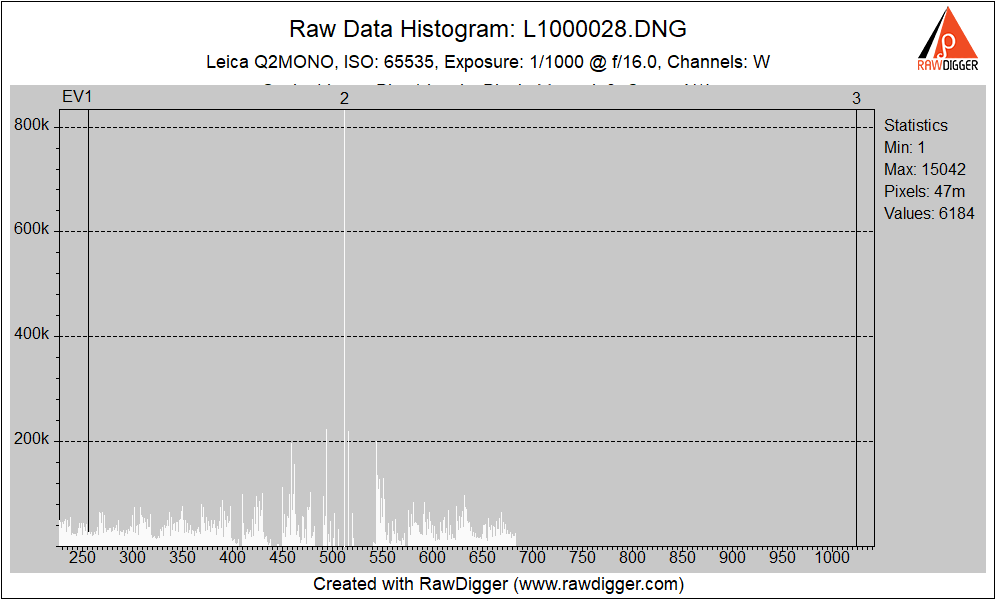
Leave a Reply